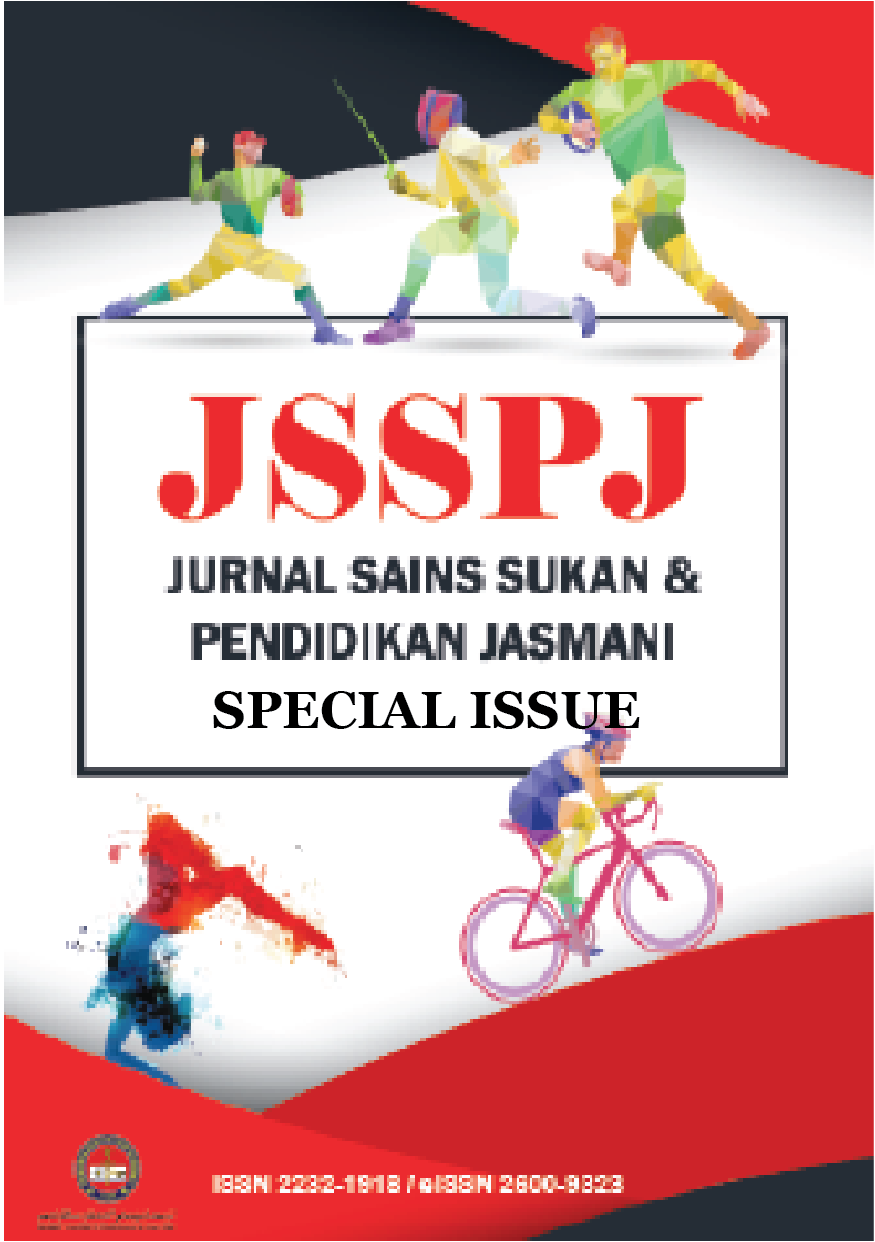Performance of Fine Motor Accuracy Skills and Preschool Children's Jawi Writing Skills
DOI:
https://doi.org/10.37134/jsspj.vol11.sp.5.2022Keywords:
Fine motor accuracy, writing skills, Jawi writingAbstract
Preschool children in Malaysia have access to an early childhood education curriculum that includes components of fine motor proficiency through the acquisition of writing skills for a variety of characters. The purpose of this study is to determine the importance of fine motor accuracy abilities and Jawi character writing skills in preschool children, as well as to suggest the key components of Jawi writing skills test instruments. This study enlisted the participation of 22 youngsters (11 boys and 11 girls) aged 5 to 6 years old from a selected kindergarten. The Jawi Writing Skills Test and the Bruininks-Oseretsky Test of Motor Proficiency Instrument (BOTMP-2) were administered to each kid. Independent T Test analysis indicated a significant difference for Jawi Writing Skills Test between gender (t = 1.75, p <0.05) and BOTMP-2 Fine Motor Precision Test between 5 and 6 year old children (t = 4.59, p <0.05). The performance of the BOTMP -2 Fine Motor Precision Test items and the performance of each character on the Jawi Writing Skills Test had a moderate correlation (r value ranging from 0.318 to -.622). The findings suggest that fine motor precision skills can influence children's mastery of Jawi writing skills. Precision skills and fine motor integration, as well as observation towards motor skill movements, may be included in the construction of jawi writing skills testing instrument.
Downloads
References
Adolph, K.E. (2008). Motor/Physical Development: Locomotion. In Encyclopedia of Infant and Early Childhood Development, 359–73. San Diego, CA: Academic Press.
Bahagian Pembangunan Kurikulum, (2017). Kurikulum Standard Prasekolah Kebangsaan, Dokumen Standard, Dokumen Standard Kurikulum dan Pentaksiran Semakan 2017. Putrajaya: Kementerian Pendidikan Malaysia
Best, J. R., & Miller, P. H. (2010). A developmental perspective on executive function. Child Development, 81(6), 1641-1660.
Bruininks, R.H., Bruininks, B.D. (2005). Bruininks-Oseretsky Test of Motor Proficiency, Second Edition, Manual, Pearson, Minneapolis
Cahill, S. M. (2009). Where does handwriting fit in? Strategies to support academic achievement. Intervention in School and Clinic, 44(4), 223-228.
Cameron, C. E., Brock, L. L., Murrah, W. M., Bell, L. H., Worzalla, S. L., Grissmer, D., & Morrison, F. J. (2012). Fine motor skills and executive function both contribute to kindergarten achievement. Child development, 83(4), 1229-1244.
Diah, N. M., & Zin, N. A. M. (2011). Digital training tool framework for Jawi character formation. In International Visual Informatics Conference (pp. 164-175). Springer, Berlin, Heidelberg.
Henderson, S. E., Sugden, D. A., & Barnett, A. L. (2007). Movement assessment battery for children-2: Harcourt assessment London.
Hidayat, N. R., Asdi, R., & Fitria, N. (2020). Role of Parents in Improving Children's Fine Motor Skills at Home during the COVID-19 Pandemic. In Proceedings of the 4th International Conference on Learning Innovation and Quality Education (pp. 1-4).
Hong, Q., Jiang, B., Xu, Q., Zhang, L., Ou, J., Zhang, Q., Li, N., Wang, J., Xie, Y.,
Hua, J., Guo, X., Tong, M., & Chi, X. (2020). Reliability and validity of
Handwriting Test for Preschool Children (HT-PRE): A new tool to assess the
handwriting ability of preschool children aged 5-6 years old in Mainland
China. PLoS ONE, 15(3), 1–18.
Huffman, J. M., & Fortenberry, C. (2011). Helping preschoolers prepare for writing: Developing fine motor skills. YC Young Children, 66(5), 100.
Largo, R. H., Rousson, V., Caflisch, J. A., Jenni, O.G. (2007). Zurich Neuromotor Assessment. Zurich, AWE Verlag.
Maurer, M. N., & Roebers, C. M. (2021). New insights into visual-motor integration exploring process measures during copying shapes. Psychology of Sport and Exercise, 55, 101954.
McCarron, L. T. (1997). Mccarron Assessment of Neuromuscular Development, 3rd edn. Dallas: McCarron-Dial Systems Inc.
Seo, S. M. (2018). The effect of fine motor skills on handwriting legibility in preschool age children. Journal of Physical Therapy Science, 30(2), 324-327.
Siren, N. R. H., & Yusoff, S. S. (2020). Pembangunan Modal Insan Melalui Kurikulum Pusat Asuhan Tunas Islam Malaysia: Human Development through Islamic Preschool Curriculum at Pusat Asuhan Tunas Islam (PASTI). Jurnal Usuluddin, 48(1), 81-98.
Surat Pekeliling Ikhtisas Kementerian Pendidikan Malaysia Bilangan 5 Tahun 2021 Ulrich, D. A. (2000). Test of Gross Motor Development, 2nd ed., Austin, TX.
Downloads
Published
Issue
Section
License
Copyright (c) 2022 Norizham Nordin, Halijah Ibrahim

This work is licensed under a Creative Commons Attribution-NonCommercial-ShareAlike 4.0 International License.





